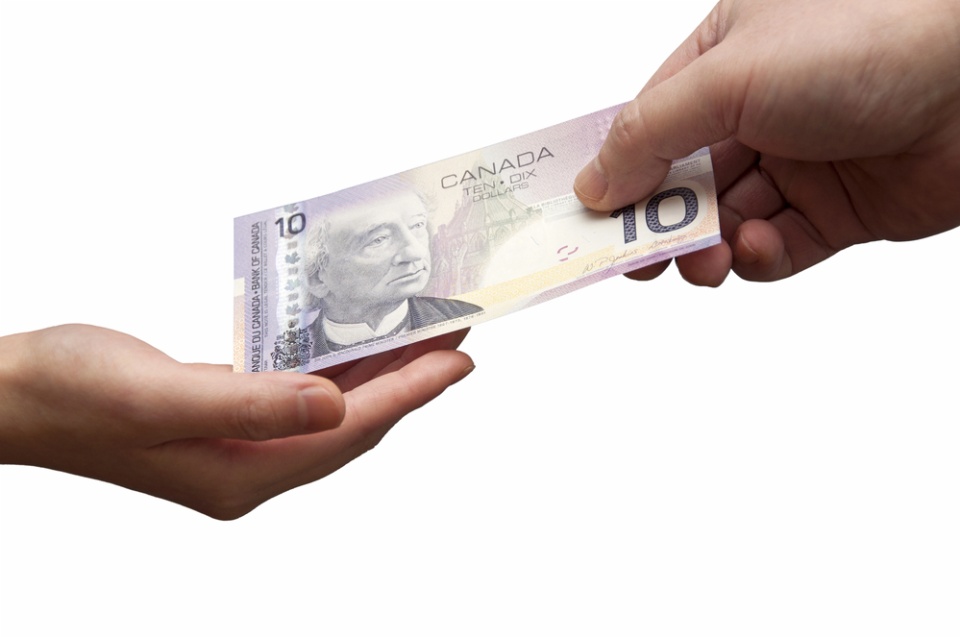Master direct vs controlled tips in your restaurant to avoid costly pitfalls and to keep your staff happy.
A couple of years ago, a well-loved Halifax restaurant found itself in a tough spot.
The Canada Revenue Agency (CRA) audited the business and decided that certain electronic tips collected over a three-year period needed Employment Insurance (EI) and Canada Pension Plan (CPP) deductions.
The restaurant owner was confident they had done things correctly, but after appealing the decision – twice – they still lost.
The result? A hefty penalty of over $100,000 in contributions for the audited years. Ouch.
What went wrong? The issue came down to how the tips were managed and whether they counted as direct or controlled tips.
This small distinction had big consequences, and it’s a reminder that even well-meaning restaurants can get caught off guard by tip compliance rules.
If you’re a restaurant owner or a bookkeeper, this is the kind of headache you want to avoid. The good news? It doesn’t have to be confusing.
In this guide, we’ll break down the difference between direct tips vs controlled tips, explain what you need to know for compliance, and offer practical tips to keep your business running smoothly.
Let’s explore further and make sure you’re on the right track to avoid surprises and penalties for your restaurant..
What Are Tips and Gratuities?
This one seems obvious but let’s make sure we’re all on the same page.
In a restaurant, tips and gratuities are an essential part of recognizing your team’s hard work. When customers leave a tip for a server who went the extra mile or a bartender who remembered their drink preference, it’s a way to show appreciation for good service.
From a business standpoint, tips also come with rules and responsibilities. Knowing how to handle them correctly helps keep things fair for your staff and compliant with tax regulations.

What Counts as a Tip or a Gratuity?
A tip or gratuity is any money a customer gives to a staff member to say “thank you” for good service. Tips can come in a few different forms, such as:
- Cash left on the table at the end of a meal.
- A tip added to a credit or debit card payment.
- A service charge added to a bill for large groups or catered events (more on this later).
Sometimes tips go straight to employees, and sometimes they pass through the business first.
How tips are handled affects your responsibilities for taxes and reporting, which is why understanding the difference between Direct Tips and Controlled Tips is important.
Why Are Tips Important to Get Right?
For many restaurant employees, tips are a key part of their income. Handling tips fairly and clearly helps:
- Support your staff by ensuring they’re paid appropriately for their work.
- Create a positive work environment where employees feel respected.
- Keep your business compliant with tax laws, avoiding fines and misunderstandings.
Direct vs Controlled Tips: Where Things Can Get Confusing
Tip handling can seem straightforward, but small differences can have a big impact.
Knowing whether a tip is direct or controlled makes all the difference when it comes to staying compliant.
What Are Direct Tips?
Direct tips are just what they sound like: tips that go directly from the customer to your employee.
These are tips where you, as the employer, don’t have control over how they’re handled or distributed.
Simple, right? But knowing the details of what makes a tip “direct” can save you from some serious compliance headaches.
Examples of Direct Tips
Direct tips can take a few different forms. Here are some everyday examples:
- Cash Left on the Table: A customer pays their bill and leaves a $20 bill for the server. The server pockets the tip right away.
- Credit or Debit Card Tips: A customer adds a tip to their card payment, and you pass the full tip amount along to the server with no strings attached.
- Tips in a Tip Jar: Customers toss their spare change into a tip jar at the counter, and employees split the tips among themselves.
In all of these cases, the money goes to employees without you (the employer) deciding how it’s shared or who gets what, and that is one of the key elements of a direct tip system.
Why Does This Matter?
Here are key points about Direct Tips:
- Employee Responsibility:
With direct tips, it’s your employees’ job to report these tips as part of their income when tax time rolls around. They need to be aware that these tips count as taxable income.
- No Deductions for Employers:
Direct tips aren’t subject to Canada Pension Plan (CPP) or Employment Insurance (EI) deductions. That means you don’t have to withhold or contribute these amounts on direct tips.
- Stay Hands-Off:
To keep a tip classified as “direct,” you can’t control or dictate how the tips are split or handed out. The moment you step in and start making decisions about the distribution, those tips may no longer be considered “direct” – and that can open the door to unexpected tax obligations.
Best Practices for Handling Direct Tips
To keep direct tips running smoothly and compliantly, here are some practical steps you can take:
- Set Up a Tip Committee:
Form a committee made up of staff members to oversee tip distribution (no restaurant owners can be part of this committee). This ensures the process is transparent, fair, and employee-driven. The committee can help clarify any disputes and decide on things like tip pooling or sharing arrangements – without employer involvement. Make sure to keep records of committee meetings, decisions, and agreements.
Click on the button below to download our free Direct Tips Committee meeting document that is perfect for keeping good records in case of an audit of your tip policy:

- Educate Your Staff:
Employees need to understand that direct tips are part of their taxable income and must be reported to the CRA. Offer quick training sessions or hand out a simple guide so everyone’s on the same page.
- Keep Records (Without Interfering):
While you shouldn’t manage direct tips, encourage your employees to track their tips for their own records. This helps them report their income accurately and protects them in case of any disputes.
- Write a Clear Policy:
Document your restaurant’s tip policy, explaining how direct tips are handled and the role of the Tip Committee. Transparency reduces misunderstandings and helps everyone feel confident in the process.
- Have Employees Sign an Acknowledgment
Document your restaurant’s tip policy, explaining how direct tips are handled and the role of the Tip Committee. Transparency reduces misunderstandings and helps everyone feel confident in the process.
Click on the button below to download our free Direct Tip Policy Acknowledgement document for your employees to sign:
- When to Pay Out Direct Tips
To keep things simple and compliant, direct tips should be paid out to employees as soon as possible – ideally at the end of each shift or workday. Immediate payouts reinforce that the tips are under the employees’ control and not managed by the employer. Delaying payouts or holding onto tips for extended periods could blur the lines between direct and controlled tips, which may lead to compliance issues.
- Stay Hands-Off:
Remember, the moment you step in to manage or control how direct tips are split, they may become classified as controlled tips. Let your staff and the Tip Committee handle distribution decisions.
What Are Controlled Tips?
Controlled tips are tips that pass through and are held by the employer who decides who gets a tip and how much, before being distributed to your employees.
Unlike direct tips, where staff have complete control, controlled tips involve some level of management or decision-making on your part.
Examples of Controlled Tips
Controlled tips can show up in different ways, such as:
- Mandatory Service Charges:
If you add a fixed service charge to a bill for large parties or catered events, and you decide how that money is split among the staff, those are controlled tips.
- Employer-Managed Tip Pooling:
When all the tips are collected and distributed based on a formula or system you set, this counts as controlled tips.
- Tips on Credit or Debit Cards (with Employer Distribution):
If customers leave tips on card payments and you decide how or when those tips are paid out to employees, they fall under controlled tips.
Why It Matters
Controlled tips are subject to different tax rules than direct tips, and those rules affect both you and your staff.
- Employer Responsibility:
Since you’re managing the distribution, controlled tips are considered part of employees’ income. This means you need to include these tips on their payroll and make the usual deductions for Canada Pension Plan (CPP) and Employment Insurance (EI).
- Reporting and Withholding:
You are responsible for reporting controlled tips on employee pay stubs, along with their regular wages. This also means withholding taxes and making your own contributions to CPP and EI.
- Record-Keeping:
Accurate records of how tips are collected, managed, and distributed are crucial. Since controlled tips are part of employees’ income, you need to:- Deduct CPP and EI from controlled tips, just like you do with regular wages.
- Report Controlled Tips on T4 Slips: Include controlled tips on employees’ T4s and make sure they are recorded in Box 14 (Employment Income) and Box 40 (Other Taxable Allowances and Benefits).
Keeping detailed records and ensuring proper reporting helps you stay compliant and avoid costly penalties if the CRA reviews your tip practices.
Best Practices for Handling Controlled Tips
Managing controlled tips doesn’t have to be complicated. Here are some steps to keep things fair and compliant:
- Be Transparent:
Make sure your staff knows exactly how controlled tips are handled. Explain the process, who decides the distribution, and how the amounts are calculated.
- Document Your Policy:
Write down a clear, detailed policy on controlled tip distribution. Include things like:
- Stay Up to Date with CRA Guidelines:
The CRA has specific rules on controlled tips, so check their guidelines regularly to make sure you’re in compliance.
- Involve a Tip Committee (If Applicable):
Even with controlled tips, you can involve a staff Tip Committee to ensure fairness and transparency. This helps employees feel they have a voice in how tips are managed, even if you’re handling the process.

Key Differences Between Direct and Controlled Tips
Understanding whether tips are direct or controlled is key as it affects tax obligations and your relationship with your staff.
Here are the main differences to keep in mind so you can confidently manage tips in your restaurant.
Who Controls the Tips?
- DIRECT TIPS:
The customer gives the tip, and the employee decides what happens next. You (the employer) don’t interfere with how these tips are split, pooled, or paid out. Employees (via the Tip Committee) have full control over these tips.
- CONTROLLED TIPS:
If you decide how tips are distributed, hold onto tips for a while, or set rules for tip pooling, those tips are classified as controlled. You, as the employer, have a hand in managing these tips.
Timing of the Payout
- DIRECT TIPS:
These should be paid out as soon as possible – ideally at the end of each shift or workday. Quick payouts help maintain the employee’s control over the tips.
- CONTROLLED TIPS:
Since these are managed by the employer, they often get paid out on a periodic schedule (like alongside regular paychecks). A significant delay in distribution is one of the key signs that tips are controlled.
Tax and Payroll Deductions
- DIRECT TIPS:
- Employees are responsible for reporting these tips as income on their tax returns.
- Direct tips are not subject to CPP (Canada Pension Plan) or EI (Employment Insurance) deductions.
- CONTROLLED TIPS:
- You, the employer, must report these tips as part of employees’ wages.
- Controlled tips are subject to CPP and EI deductions, just like regular pay.
- You need to include controlled tips on employees’ T4 slips, specifically in Box 14 (Employment Income) and Box 40 (Other Taxable Allowances and Benefits).

Role of a Tip Committee
- DIRECT TIPS:
Employees can set up a Tip Committee to help manage the distribution of direct tips. This keeps things fair, transparent, and employee-driven, while you stay hands-off.
- CONTROLLED TIPS:
Since you manage the distribution of controlled tips, a Tip Committee doesn’t apply here. The distribution process is set by the employer, which is part of why these tips are classified as controlled.
Employer Involvement
- DIRECT TIPS:
You should stay out of the process entirely. The less involvement you have, the better. Any decisions about splitting or pooling tips should be made by employees.
- CONTROLLED TIPS:
Your involvement is what defines these tips. If you’re setting the rules, collecting the tips, or deciding how they’re shared, those tips fall under the controlled category.
Why These Differences Matter
Misclassifying tips can lead to penalties, unhappy staff, and unnecessary stress. By knowing the differences, you can:
- Stay Compliant: Avoid audits and fines by handling tips the right way.
- Keep Things Fair: Ensure employees know what to expect and feel good about the system.
- Protect Your Business: Clear policies and proper reporting keep everything running smoothly.
Next, we’ll dive into how to set up a compliant tip distribution system so you can avoid surprises and keep your team happy.
Compliance Requirements for Canadian Restaurants
Staying compliant with tip and gratuity rules in Canada will not only help you avoid penalties, it will also help you create a fair and transparent system for your team. As an employer, knowing your responsibilities when it comes to direct tips or controlled tips, is essential.
Here’s what you need to keep in mind to stay on the right side of the rules.
Employer Responsibilities
Here are the main employer responsibilities when it comes to tips:
Know the Difference Between Direct and Controlled Tips
The first step is understanding whether tips are direct (handled by employees) or controlled (managed by you).
Misclassifying tips can lead to unwanted penalties and headaches. Review your tip policies regularly to ensure they reflect what’s happening in your business.
Deduct CPP and EI for Controlled Tips
If you manage tips in any way (making them controlled tips), you must:
- Deduct Canada Pension Plan (CPP) or Quebec Pension Plan (QPP) contributions.
- Deduct Employment Insurance (EI) premiums.
- Report these amounts as part of employees’ regular wages on their T4 slips in Box 14 (Employment Income) and Box 40 (Other Taxable Allowances and Benefits).
For direct tips, no CPP or EI deductions are required, and employees are responsible for reporting them.
Maintain Clear Records
Good record-keeping is your safety net. Keep detailed records of:
- Tip distribution policies (who gets what and how it’s decided and by whom).
- Employee tip declarations (especially if you’re in Quebec, where staff must declare all tips to the employer).
- Tip amounts collected and distributed, including dates and methods of payout.
Having clear records helps protect you during a CRA audit and shows your commitment to fair practices.
Educate Your Team
Make sure your staff understands:
- The difference between direct and controlled tips.
- Their responsibility to report direct tips as income to the CRA.
- How controlled tips are included in their payroll and deductions.
A quick training session or a simple handout can go a long way in keeping everyone informed.

Employee Responsibilities
Your team also has a role to play in compliance:
- Report Direct Tips: Employees must report all direct tips as part of their taxable income.
- Declare Tips in Quebec: In Quebec, employees are legally required to declare their tips to you, the employer, so you can include them in payroll deductions.
Encourage your staff to keep personal records of the tips they receive to make tax time easier.
CRA Guidelines to Keep in Mind
The Canada Revenue Agency (CRA) has specific rules on how tips should be managed and reported. Here are a few key points:
- Direct Tips: Employees report them on their own; no employer deductions.
- Controlled Tips: You must handle tax deductions and include them in payroll and report them on T4 slips.
Benefits of Staying Ahead of Compliance
Following these steps will help you:
- Avoid Penalties: Accurate reporting and deductions keep you in good standing with the CRA.
- Build Trust: Clear, fair tip policies create a positive work environment and show your staff you have their backs.
- Protect Your Business: Good compliance practices shield your business from costly mistakes and legal trouble.
Up next, we’ll talk about how to set up a compliant tip distribution system so you can put all of this into action with confidence.
Implementing a Compliant Tip Distribution System
Now that you understand the difference between direct tips and controlled tips, it’s time to put that knowledge into practice. Setting up a compliant tip distribution system doesn’t have to be complicated. With the right steps in place, you can create a system that’s fair, transparent, and keeps your restaurant on the right side of the law. Here’s how to do it.
Create a Clear Tip Policy
Start by writing a clear and easy-to-understand tip policy that outlines:
- How tips are classified: Explain whether your restaurant uses direct tips, controlled tips, or a combination of both.
- Who decides distribution: For direct tips, emphasize that employees control the process. For controlled tips, detail how you distribute the tips.
- Payout timing: Specify when tips are paid out – at the end of each shift for direct tips, or with regular payroll for controlled tips.
Make this policy available to all staff and go over it during onboarding and team meetings.
Set Up a Tip Committee (for Direct Tips)
If your restaurant uses direct tips, consider setting up a Tip Committee. The committee should be made up of staff members (no managers or owners) who oversee tip distribution. This helps ensure fairness and transparency while keeping you, the employer, hands-off.
The committee can:
- Resolve disputes about tip sharing.
- Decide on pooling or sharing arrangements among employees.
- Document meeting minutes and decisions to keep everything transparent.
Document Everything
Good documentation protects both you and your employees. Keep records of:
- Tip amounts collected and distributed (for controlled tips).
- Tip Committee decisions and meeting notes (for direct tips).
- Employee tip declarations (especially if you’re in Quebec, where staff must declare all tips).
If the CRA ever audits your business, clear documentation helps show you’re doing things by the book.
Educate Your Staff
Make sure your team understands:
- The difference between direct and controlled tips.
- Their tax responsibilities for reporting direct tips.
- How deductions work for controlled tips.
Stay Updated on CRA Guidelines
Tip compliance rules can change, so it’s important to stay in the loop. Regularly check the CRA website for updates or subscribe to industry newsletters. Staying informed helps you avoid surprises and keeps your tip practices compliant.
Review and Audit Your System Regularly
Even the best systems need a check-up now and then. Every few months, review your tip distribution process to make sure it’s:
- Fair: Are employees satisfied with the system?
- Transparent: Are policies and decisions clear to everyone?
- Compliant: Are you meeting all CRA requirements?
Regular reviews help catch small issues before they turn into big problems.
Putting It All Together
A compliant tip distribution system doesn’t just protect your business -it supports your employees and builds trust.
By creating clear policies, documenting your processes, and keeping your staff informed, you’re setting everyone up for success.

A Quick Note on Tip Treatment in Quebec
In Quebec, the handling of tips and gratuities has unique requirements that differ from the rest of Canada.
Specifically, employees in the restaurant, bar, and hotel sectors are required by law to declare their tips to their employer.
This declaration ensures that tips are accurately reported and subjected to appropriate deductions.
Key Points for Quebec Employers and Employees:
- Employee Declarations: Employees must report all tips received to their employer. This includes both direct tips (given directly by customers) and controlled tips (managed by the employer).
- Employer Responsibilities: Upon receiving the declared tip amounts from employees, employers are obligated to:
- Include these amounts in the employees’ reported income.
- Deduct Quebec Pension Plan (QPP) contributions and Employment Insurance (EI) premiums from the total earnings, which now include the declared tips.
- Ensure that these amounts are accurately reflected on the employees’ T4 slips.
- Tax Implications: By incorporating declared tips into the employees’ income, both employees and employers contribute appropriately to QPP and EI, which can affect future benefits and entitlements. This goes for both Direct and Controlled tips in Quebec.
It’s essential for both employers and employees in Quebec to be aware of these specific obligations to ensure compliance with provincial regulations and to support the accurate calculation of benefits.
What Happens if You Don’t Follow the Rules?
Managing tips might seem like just one more thing on your already full plate, but getting it wrong can lead to some serious trouble.
Missteps in tip handling can affect your business, your employees, and your peace of mind.
Let’s walk through what can happen if your tip practices aren’t compliant – and how to avoid these pitfalls.
Financial Penalties and Fines
The Canada Revenue Agency (CRA) doesn’t mess around when it comes to tip compliance. If you misclassify tips or fail to deduct CPP and EI from controlled tips, you could face:
- Penalties for unpaid CPP and EI contributions.
- Interest charges on unpaid amounts.
- Hefty Fines: as shown in the case of a Halifax restaurant ended up paying over $100,000 in penalties.
These penalties can add up quickly, putting a major strain on your business finances.
Tax Reassessments
If the CRA audits your restaurant and finds issues with your tip reporting, they can issue a tax reassessment. This means:
- You may have to pay back taxes, plus penalties and interest.
- Employees may also face reassessments if they didn’t report their tips correctly.
A reassessment can disrupt your operations and create stress for everyone involved.
Damage to Employee Trust
Nothing sours a workplace faster than a dispute over money. If employees feel that tips aren’t being handled fairly or transparently, it can lead to:
- Low Morale: Staff may feel unappreciated or distrustful.
- High Turnover: Talented employees may leave for workplaces where they feel more respected.
- Disputes and Complaints: Unhappy staff may file complaints, which can escalate into legal trouble.
Legal Headaches
Non-compliance with tip handling regulations can lead to legal challenges, including:
- Labor Board Complaints: Employees can report unfair tip practices to labor boards or employment standards offices.
- Court Cases: If disputes escalate, they can end up in court, costing time, money, and reputation.
Handling tips the right way protects you from these unnecessary headaches.
Reputational Damage
In the restaurant industry, reputation is everything. Word travels fast, and if your business is known for mishandling tips, it can hurt:
- Customer Loyalty: Customers may choose to dine elsewhere if they believe staff aren’t treated fairly.
- Community Standing: Your local reputation can take a hit, affecting business partnerships and community support.
Good tip practices show you care about your staff, which builds a positive image for your business.
How to Avoid These Pitfalls
Staying compliant doesn’t have to be complicated. Here’s a quick recap to keep you on track:
- Know the Difference: Understand direct vs. controlled tips and handle each accordingly.
- Keep Records: Document your tip policies, distributions, and employee declarations.
- Deduct Correctly: For controlled tips, make sure you’re deducting CPP and EI and reporting them on T4 slips.
- Stay Transparent: Communicate clearly with your staff about how tips are handled.
- Review Regularly: Periodically check your tip practices to make sure they’re fair and compliant.
Mistakes in tip handling can cost you – financially and personally. By understanding the rules, setting up clear policies, and keeping everything transparent, you protect your business, support your team, and avoid unnecessary stress.
Conclusion
Navigating the ins and outs of direct vs. controlled tips can feel like one more challenge on top of an already demanding job.
But understanding how to manage tips fairly and compliantly doesn’t just protect your business – it also supports your staff and keeps things running smoothly.
By setting clear policies, keeping accurate records, and knowing your responsibilities, you can avoid costly compliance issues and build trust within your team.
And remember, tip management isn’t something you have to figure out on your own.
When in doubt, consult a trusted bookkeeper or accountant who understands the nuances of tip compliance in the restaurant industry. They can help you stay on track and give you the peace of mind you need to focus on what you do best — running a great restaurant.
Additional Resources
- Download our free documents for Direct Tip Policy:
